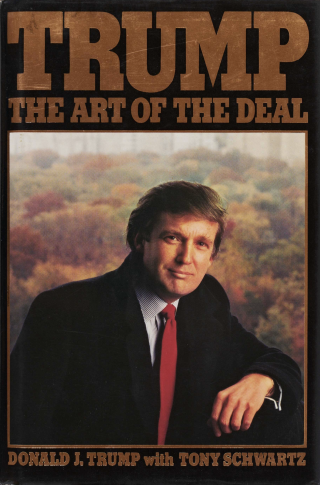In the fall of 1984, a few months after arriving at Random House as a senior editor, I was at lunch with the publishing house’s proprietor, S. I. (Si) Newhouse (whose family owns Condé Nast, which publishes The New Yorker), and its C.E.O., Robert Bernstein, who had hired me away from the Washington Post. We were in the Bahamas, at a sales conference. Newhouse was ordinarily a quiet, phlegmatic man, I had been told, but on one subject he was very animated: Donald Trump. By then, Trump, who had recently completed the construction of a shimmering tower on Fifth Avenue, had been around for a decade. A profile in the Times, in 1976, had called him New York’s “No. 1” real-estate promoter. “He is tall, lean and blond,” the story noted, “and he looks ever so much like Robert Redford.” More recently, at the suggestion of Roy Cohn, the notorious New York lawyer and fixer, who had been Newhouse’s close friend since their days together at the Horace Mann School, Trump had appeared on the cover of GQ, a Condé Nast magazine. The issue had sold especially well.
This Trump fellow, Newhouse now said, was more than a comer. He had arrived. The word was that Newhouse was hands-off when it came to acquiring books, but on this occasion he emphatically was not. He said, “Let’s do a book with Trump.” I had been brought to Random House to acquire and edit, among other things, high-profile books by public figures. Newhouse said that he would arrange a meeting with Trump, and it was decided that Howard Kaminsky, the new publisher of the Random House trade division, and I would accompany him. Kaminsky was a friend of Newhouse and was clearly his choice as publisher, not Bernstein’s.
The day of the meeting arrived, and we were led into Trump’s office, on the twenty-sixth floor of Trump Tower, by his personal assistant, an elegant woman named Norma Foerderer. (She would later have an assistant of her own, Rhona Graff, who is still Trump’s personal assistant in New York.) The office had a spectacular view of Central Park and the Plaza Hotel, which Trump coveted. The walls were covered with magazine spreads he’d appeared in and some plaques. There was a large phone console, but Trump summoned Norma and others with a shout.
Newhouse made the pitch. We had brought along a cover proposal––black background, a photograph of Trump, and his name and the title in gold letters. Trump liked the cover but said his name should be larger. It wasn’t clear to me whether he was being serious or engaging in self-parody. In any case, by the end of the meeting, Trump was ready to do the book. We soon learned that a writer named Tony Schwartz, who had worked at Newsweek and the Times, had come to Trump with a concept for a book they could do together, to be called “The Art of The Deal.” All the pieces were in place. The advance was five hundred thousand dollars, to be split evenly, from the first dollar, with Schwartz as the co-author. I don’t remember dealing with either an agent or a lawyer.
